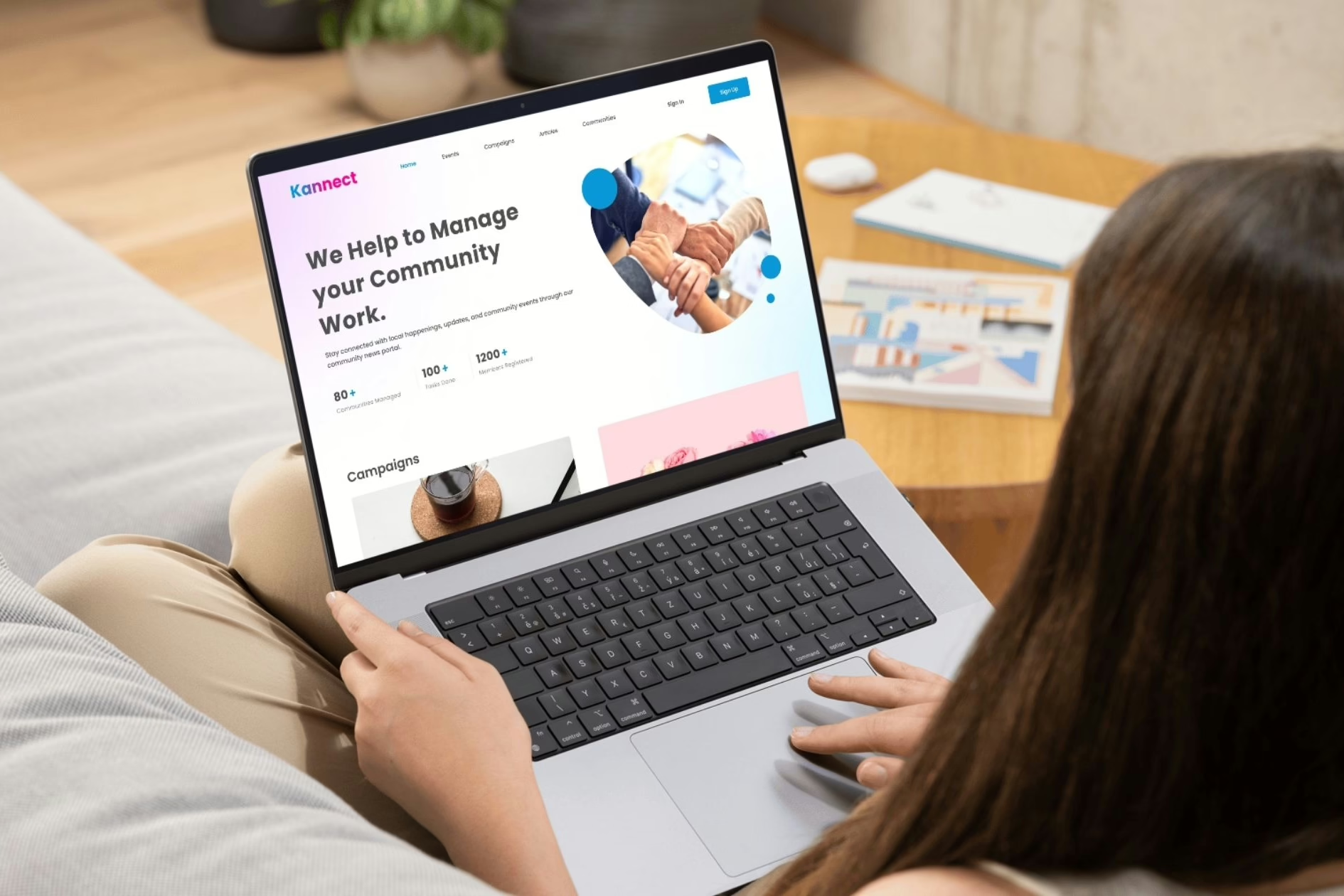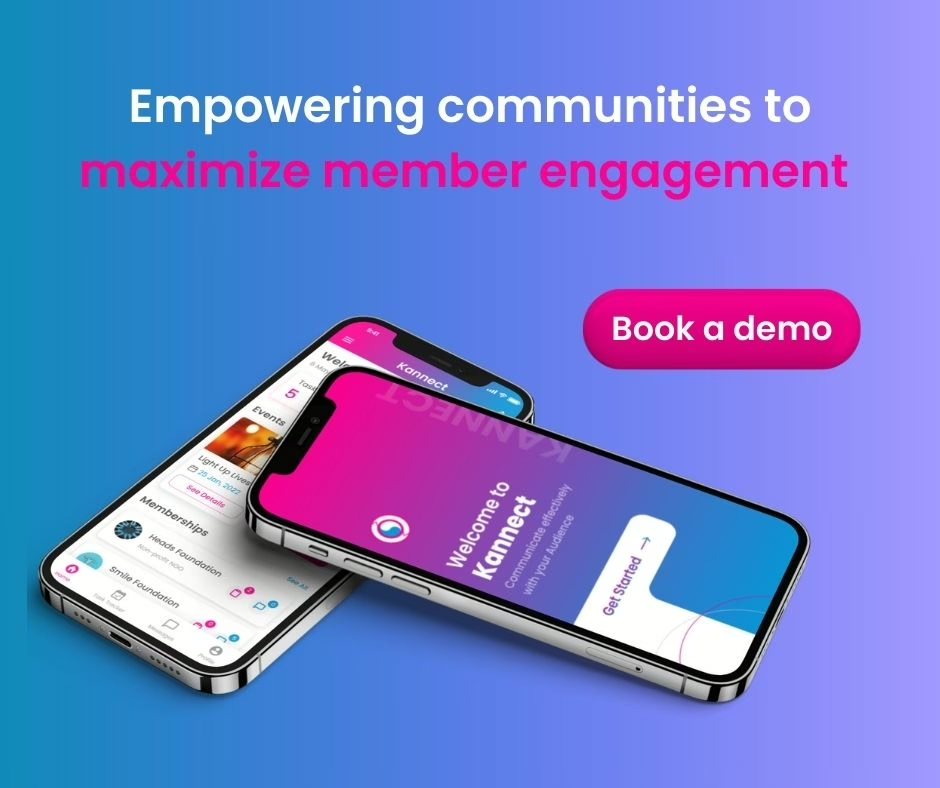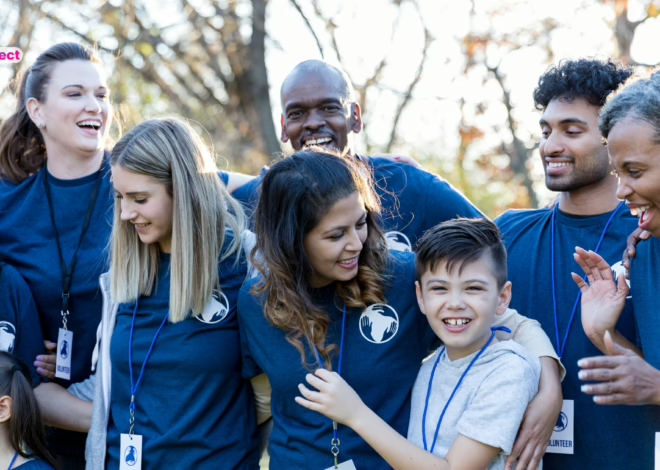
The Ultimate Guide to Hosting Impactful Virtual Community Events (8 Best Tips!)
Table of Contents
Start with Why, Not Wi-Fi
Swipe fatigue. Muted mics. Ghosted RSVPs. If you’ve ever hosted a virtual event, you know the struggle. But here’s the truth: virtual community events aren’t just a backup plan. When done right, they are powerful spaces for belonging, connection, and growth.
Forget the crowded invites and pixelated networking mixers. The most memorable moments today aren’t happening inside massive webinars, they’re being sparked in well-crafted virtual community events where people feel seen, heard, and valued.
If you’ve ever asked yourself, “How do I make this more than just another meeting?”, this guide is for you!
The Heartbeat of Belonging: Why Virtual Community Events Matter
A virtual community isn’t just a space; it’s a feeling. When done right, these gatherings do more than transfer information. They create emotional connection, cultivate culture, and let members feel like they’re a part of something real, even when physically apart.
As our work and social lives increasingly blend into digital spaces, it’s more important than ever to create events that aren’t just “Virtual calls” but experiences that spark something real. These events have the power to knit together people across time zones, backgrounds, and walks of life.
They are moments where transformation happens not just transaction. Here’s how to host an impactful virtual community event:
1. Start With Purpose: What’s the “Why” Behind Your Event?
Every powerful event starts with a pause. Before brainstorming speakers or creating banners, anchor the intention. Ask yourself:
- What transformation do I want people to walk away with?
- How does this event deepen our virtual community values or mission?
- Is this about knowledge-sharing, connection-building, or something else?
- What should people feel after this event?
Start with heart. Hosting a purposeful event means moving beyond logistics to ask: What impact will this create? What change will it spark in someone’s day, mindset, or life?
It’s easy to chase trends – a popular speaker, a flashy campaign but true resonance happens when the event feels necessary, timely, and rooted in care.
A strong purpose is like a compass. It guides every decision – the tone of your messaging, the type of engagement, even the snacks you might send out (yes, even virtually!).
People don’t remember everything they hear. But they always remember how something made them feel. Make that feeling intentional.
When you lead with intention, everything from the invite to the interactions feels aligned. Purpose beats popularity. Not all virtual community events are created equal and they shouldn’t be. Clarity on the “why” leads to a meaningful “how.”
2. Audience First: Design for People, Not Platforms
It’s tempting to jump into tech logistics. But your virtual community comes first. Build backwards from their lived experience:
- Time zones & availability: Make it easy for people in multiple regions to join.
- Accessibility: Include captioning, screen-reader compatibility, bandwidth-friendly features.
- Language & cultural nuances: Avoid jargon and regional idioms; honor diverse norms.
- Current needs or challenges: Is your virtual community tired? Celebrating something? Navigating a shared challenge?
Design with empathy. The best events are those that meet people where they are – emotionally, geographically, energetically.
Are they logging in after a long day of work? Are they seeking joy, clarity, or simply a space to breathe? Understanding this shapes the way you welcome them.
Accessibility isn’t a nice-to-have: it’s a baseline. Whether someone is joining with a screen reader, tuning in from a phone, or listening with captions, everyone deserves a seat at the table.
Your audience gives you their most valuable asset: time. Honor it by creating experiences that feel intentional, respectful, and tailored to them.
When you know what your audience needs, your event becomes a gift not a task.
3. Format Isn’t a Formula: Choose What Fits the Moment
One of the biggest perks of virtual community events? Flexibility. Not every virtual community event should look the same. Choose the format based on the energy and outcomes you want.
Here’s a cheat sheet:
Fireside chats – Personal, unfiltered conversations with room for curiosity.
Roundtables – Great for equal voice participation and peer learning.
Workshops – For hands-on learning and action-oriented experiences.
Panels/Q&As – Ideal when showcasing expertise or thought leadership.
Digital co-working – Quiet accountability and casual connection.
Culture nights/socials – Build virtual community identity through themed hangouts or celebrations.
Format is your event’s skeleton, but the soul is in how it’s delivered. Let your goals inform the shape, not the other way around.
Sometimes the most powerful format is the simplest – a heartfelt roundtable that lets every voice be heard. Other times, it’s a high-energy panel that inspires action and dialogue.
Play with the rhythm. Mix moments of quiet reflection with bursts of joyful interaction. Keep your community on their toes, not with chaos, but with care.
Think of format as your creative playground. There are no rules, only intention. When form follows feeling, your event becomes unforgettable.
💡 Combine formats! A brief workshop followed by a fun mixer or an ask-me-anything (AMA) session can keep things dynamic and wholesome. The best format is the one that mirrors the feeling you want to leave your audience with!
4. Experience is Everything: Make It Memorable
People may forget your agenda, but they won’t forget how you made them feel. Make every touchpoint intentional:
- Warm, personal invites (not just automated email blasts)
- Inclusive ice-breakers that go beyond “Tell us your name and favorite snack”
- Music, visuals, or customs that reflect your virtual community’s personality
- Clear agendas that still leave room for spontaneity
- Surprise shout-outs or small delights that make people feel appreciated
The magic lies in crafting an atmosphere where even the quietest voice feels welcome, and the loudest one knows when to listen. Thoughtful curation turns an ordinary session into a heartfelt experience.
This could mean designing a custom background that reflects your virtual community’s shared values, or integrating a segment like a gratitude round at the end- small, consistent actions that build emotional resonance.
Your audience doesn’t just want to learn, they want to belong. When they walk away with a full heart and not just a full notebook, you’ve done your job right.
Great virtual community events are less about the flash and more about the feeling. Let your brand personality shine, whether it’s cozy, playful, vibrant, or bold.
5. People First, Platform Second: Humanize the Experience
It’s not just what you say, it’s how you hold the space. Ways to make the space feel more human:
- Begin with intentional introductions (names + pronouns)
- Open with a grounding check-in or welcoming question
- Use inclusive language and avoid jargon
- Create multiple ways to engage – chat, visuals, audio, emojis
- Celebrate vulnerability with gratitude, not awkward silence
Digital doesn’t have to mean distant. Think about the ways you’d welcome someone into your living room- warmth, curiosity, generosity and bring that spirit into your virtual room.
Set a tone that values presence over perfection. It’s okay if a dog barks or someone’s video flickers, what matters is that your space feels alive, inclusive, and real.
One small gesture, remembering someone’s birthday, checking in if they seemed quiet, can create deep emotional ties in a virtual community setting. The screens may separate us, but humanity connects us.
Your virtual community deserves to feel like they matter. Because they do.
6. Tools Are the Stagehands: Choose Tech That Supports the Vibe
Tech can elevate or eclipse your event. Choose tools that support your goal and feel natural to your audience.
Here are a few popular, virtual community-favorite options:
- Kannect – Simple and easy-to-navigate UI/UX, highly customizable options, and built-in spaces for events, activities, and ongoing virtual community engagement. Includes daily summaries to keep everyone aligned and connected.
- Butter – Playful UX, built-in timers, polls, breakouts. Great for interactive sessions.
- Zoom – Reliable and familiar, with strong breakout and chat functions.
- Luma – Excellent for landing pages, RSVP tracking, and follow-ups.
- Hopin – Good for larger events with booths, networking, and hybrid options.
- Google Meet – Simple, lightweight, and accessible for many.
A great platform fades into the background empowering interaction instead of interrupting it. Your audience shouldn’t have to fight the interface to feel connected.
Choose tools not because they’re trendy, but because they serve your people. Polls, emojis, whiteboards, when thoughtfully used, can add life and levity to your virtual community gatherings.
When tech becomes a bridge instead of a barrier, engagement flows naturally.
💡 Always host a dry run, walk through the experience as if you’re the participant and have backups ready, from slides to co-hosts, just in case the tech gets glitchy.

7. Avoid the Common Pitfalls
Even thoughtful hosts can stumble. Here are some pitfalls to dodge:
- Overloading the agenda with too much content
- Not offering multiple ways to engage (not everyone loves breakout rooms!)
- Assuming people will “just show up” without pre-event nudges or reminders
- Forgetting accessibility needs like captions, time zones, neurodivergent-friendly pacing
- Making it all about the brand instead of centering the people
- Lack of follow-up or next steps
Avoiding these mistakes isn’t just about logistics, it’s about building credibility and consistency. People return to spaces where they feel seen, not sold to.
No one wants to attend a crowded, cluttered event that leaves them drained. Instead, aim for clarity, rhythm, and space to breathe so your virtual community can engage meaningfully and return for more.
Remember, each misstep is a moment to learn. And each correction brings you closer to creating something beautiful.
These small tweaks make a big difference. They can be the difference between a one-time event and a lasting virtual community memory.
8. After the Applause: What Happens Next?
The final “thank you for joining” shouldn’t be the last thing they hear. Build continuity and keep the momentum going:
- Send a personalized recap, not just notes, but a reflection of the experience
- Share recordings, slides, or resources (if applicable)
- Invite them into what’s next like a group chat, survey, or upcoming event
- Ask for feedback, short polls or fun rating scales work wonders
- Tag or mention attendees in your online spaces to spotlight their participation
Think of your follow-up as the encore, the quiet moment where your virtual community realizes, “Wow, they really cared.”
A single message, acknowledging someone’s contribution or asking for their thoughts, can turn passive attendees into passionate advocates.
Keep the energy alive. Keep the door open. The goal isn’t just attendance, it’s belonging. And belonging lasts longer than any breakout session.
💡 Thoughtful follow-ups create emotional resonance. Trust is built when people feel remembered and cared for.
9. Pro Tips for Hosting Like a Pro
Want to level up your virtual community experiences? Keep these in mind:
- Create event rituals/customs like a signature welcome, a grounding prompt, or a unique sign-off
- Involve your virtual community – invite them to co-host, share, or lead part of the session
- Reflect and iterate, your last event is your best teacher
- Build in small surprises like a virtual gift, inside joke, or moment of shared laughter
- Make space for serendipity, some of the best moments aren’t planned
Hosting like a pro isn’t about being perfect, it’s about being present. It’s about reading the energy, holding the silence, and knowing when to pivot.
Some of the most magical virtual community moments happen when a host pauses, listens, and lets the group lead.
Your job is to set the tone, shape the space, and then step back and let the community bloom. That’s when the real magic begins.
At the heart of every thriving virtual community is trust and events are where that trust is built, moment by moment.
🎁 Want a Free Event Planning Checklist?
Ready to plan with purpose and host with confidence? We’ve created a free, printable Virtual Event Checklist, with every step mapped out so you can focus on what really matters: Your Community.
👉 Download the Virtual Event Checklist → Here!
The Takeaway
Great virtual community events aren’t defined by flashy speakers, perfectly curated slides, or high-tech platforms. They’re built with clarity of purpose, genuine care for the people attending, and consistency in how you show up. At the end of the day, what truly matters is how well your event reflects the heart of your virtual community: its values, energy, and intent.
When you gather people not just to consume content, but to truly connect – something meaningful takes shape. People start to feel like they belong. They participate not out of obligation, but out of excitement. They remember the conversation, not just the content. And they leave feeling seen, appreciated, and inspired to return.
Because the real power?
It isn’t in the tech. It isn’t in the timeline.
It’s in how your virtual community feels, long after the screen goes dark.
💡 Want more insights like this? Follow us on LinkedIn and Subscribe to our weekly newsletter Community Engagement Playbook for inspiring Kannect segments, community stories, and tips to upgrade your next virtual community event.
Try Kannect today

Proudly powered by WordPress
What’s the difference between a virtual event and a community event?
A typical virtual event might focus on sharing content or updates like a webinar. A virtual community event is about people. It centers relationships, shared purpose, and connection. Less “lecture,” more “let’s grow together.”
How can I get more people to show up for my community events?
Start with value. If your virtual community knows what they’ll gain: inspiration, learning, connection, they’ll show up. Send personal invites, share exciting snippets beforehand, and give people a reason to care. Also: make RSVPing easy and reminders friendly.
How do I keep energy up in a virtual room?
Mix it up! Use music, polls, games, or simply short breaks. Rotate speakers or invite members to share. Most importantly, read the room. If folks are quiet, ask reflective questions. If energy’s high, ride the wave!
Should I always record my virtual events?
Not always. If your event is personal, vulnerable, or about live connection, skip the recording. But if there’s valuable content, it’s great to share. Always ask permission first, especially in virtual community spaces where trust matters.
How can Kannect help me plan and host better virtual community events?
Kannect equips you with everything you need to build, host, and grow your virtual community. From event planning tools and RSVP tracking to post-event engagement and member insights – it’s all integrated. No more clutters and chaos, just one platform to build genuine community, virtually.
Can I use Kannect if my community is still small?
Absolutely. Some of the most meaningful virtual communities start with just a handful of members. Kannect is designed to scale with you, without losing that personal touch.



